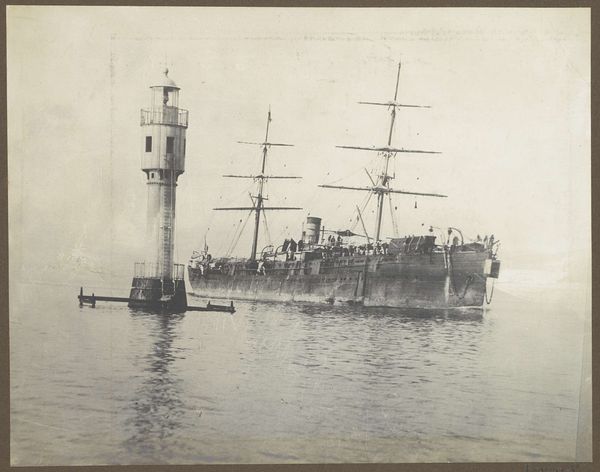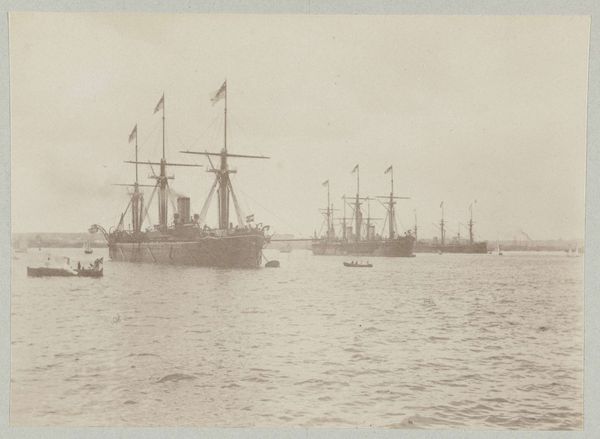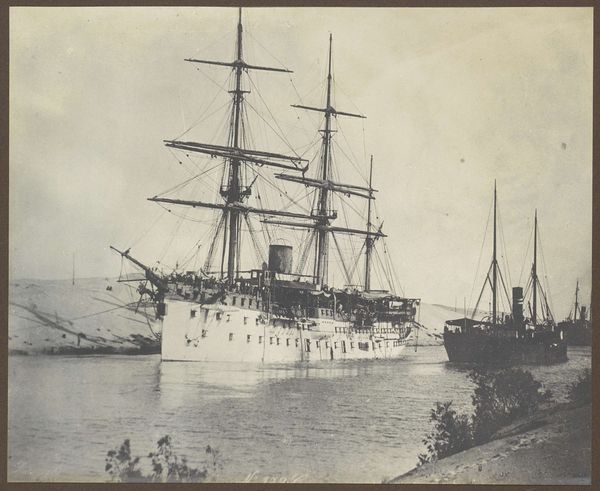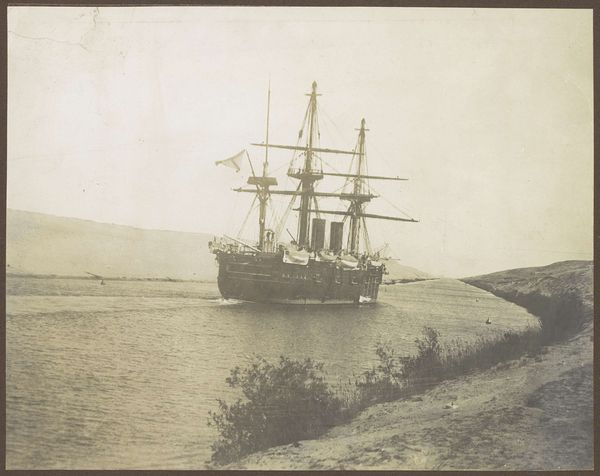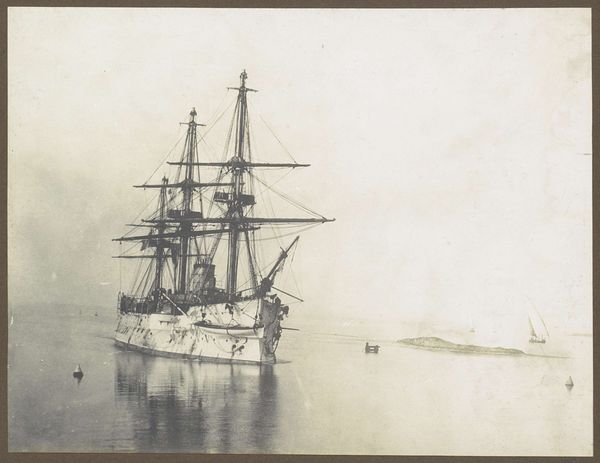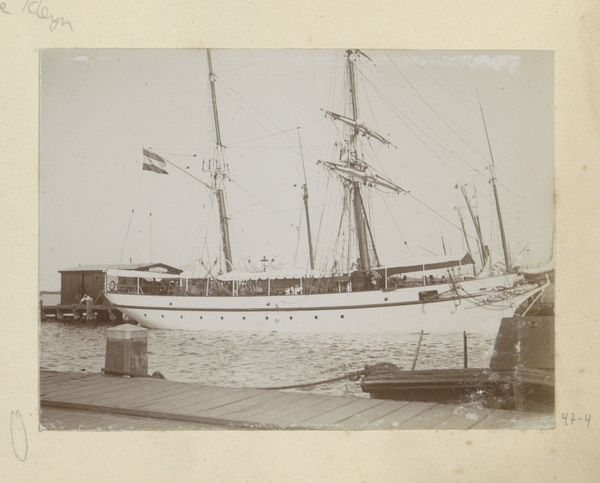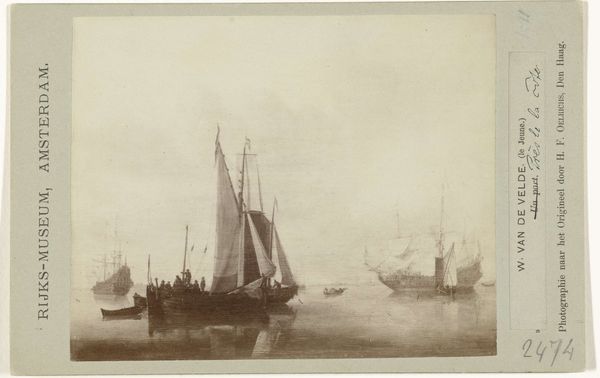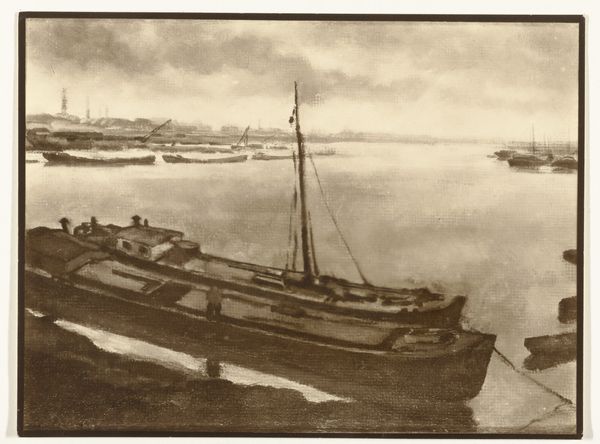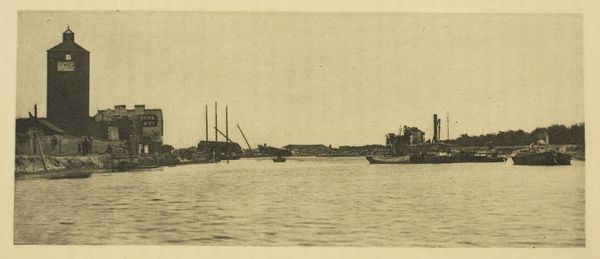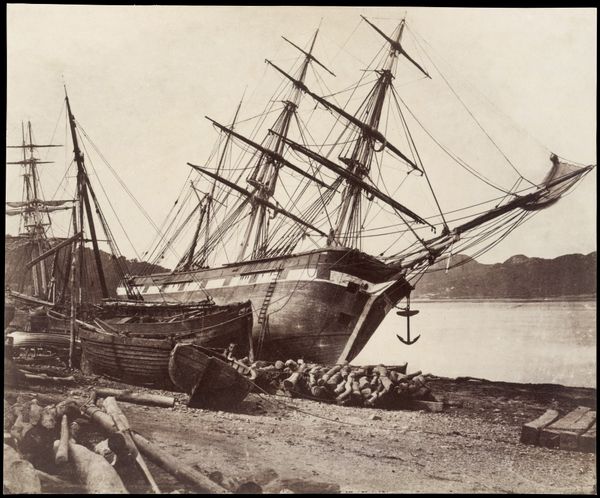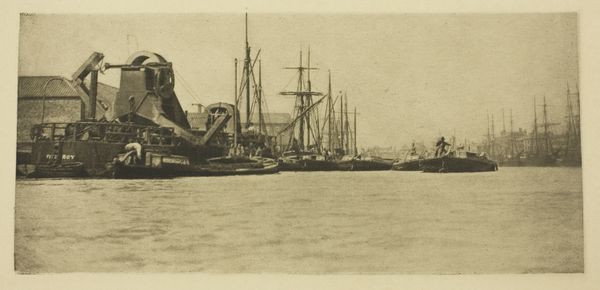
print, photography, gelatin-silver-print
# print
#
landscape
#
photography
#
orientalism
#
gelatin-silver-print
#
cityscape
Dimensions: height 215 mm, width 273 mm
Copyright: Rijks Museum: Open Domain
Curator: This is a gelatin silver print, taken sometime between 1880 and 1900, called "Schip vaart door het Suezkanaal" or "Ship sailing through the Suez Canal" by C. & G. Zangaki, here at the Rijksmuseum. Editor: My goodness, what a wonderfully ghostly scene. It's all in shades of sepia and grey. The ship appears to almost glide, timeless against that faded, gritty sky. Like a dream fading in the salty air. Curator: What I find fascinating is how the photograph speaks to the technological marvel that was the Suez Canal at the time, linking East and West and revolutionizing global trade. This image is as much about engineering and labor as it is about maritime transport. Editor: I suppose, but doesn’t that steal away its inherent mystery? To me, the texture is so rich. I feel as if I can almost smell the ship’s hot engine mixing with the ocean, which makes the mechanical feel somewhat spiritual. All of that tied into labor exploitation does dampen my appreciation slightly… Curator: Exactly. Look at the context: materials had to be mined, manufactured, shipped. Labor, often exploitative, built both the canal and the ship. These early photographs themselves became commodities, souvenirs of a journey through a new world order. Editor: Perhaps. But the artistry in its creation, its capture…the very framing! All combine, transforming documentary into something almost dreamlike. This image sings a song of transit and the vastness of human aspiration, yet hums also the silent cost involved with grand ambition. Curator: And that's the tension, isn’t it? We’re drawn to the aesthetic appeal while being compelled to question the conditions that made its production possible, or even that which allowed those travels themselves. Editor: A fitting dichotomy, really. I’m left feeling both somber and strangely hopeful; aware and awake as if stepping between two worlds –– an old and rapidly approaching new one. Curator: Indeed. By investigating images like these, we can critically reflect on that historical shift while appreciating the tangible legacy of both photographic technology and human development during that pivotal era.
Comments
No comments
Be the first to comment and join the conversation on the ultimate creative platform.
